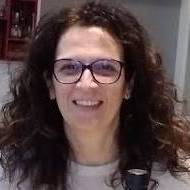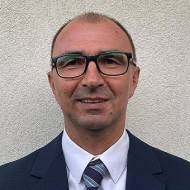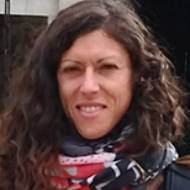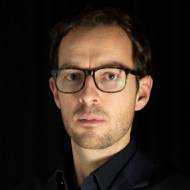
October 12-16, 2025
Grand Hotel San Michele
Calabria, Italy
About This Conference
This conference follows from the success of the first seven international conferences on Electrophoretic Deposition: Fundamentals and Applications, organized under sponsorship of the Engineering Foundation Conferences (EFC) in August 2002 (Canada) and Engineering Conferences International (ECI) in June 2005 (Italy), October 2008 (Japan), October 2011 (Mexico), October 2014 (Austria), October 2017 (South Korea) and November 2022 (USA). The goal is to bring together experts working in the area of electrophoretic deposition (EPD) with focus mainly on its application as a processing technique for the fabrication of both traditional and new materials, nanomaterials and composites.
Electrophoretic deposition exploits an electric surface charge on particles in suspension, which migrate in the presence of an appropriate electric field enabling the consolidation of particles into films onto any shaped substrate or forming bulk ceramic components. For its successful application, a basic understanding of the colloidal stability, the deposition kinetics, and the constrained drying and sintering issues of the deposit is necessary.
The conference will cover fundamentals and applications of electrophoretically deposited thick and thin films in several areas such as protective coatings, biomedicine, manufacturing of electro/photoactive, electro-mechanic, sensors and optical devices.
Topics will include the fabrication of tailored coatings, films and multilayer structures with new functionalities in:
- Transportation and Communication
- Energy Conversion and Storage
- Healthcare and Clean Technologies
Contributions that address the in-situ characterization of particle surface modification in liquid media, rheology, deposition ordering and kinetics will be considered, and papers that discuss mechanistic aspects of co-deposition will be particularly welcome. In addition, new areas of applications of EPD are the low-cost fabrication of composite materials, including advanced ceramics, fiber reinforced materials, nanocomposites, composite laminates and functional gradient materials.
Moreover, progress has been reported on the development of EPD as an additive manufacturing technique because it allows processing of customized products with a precise placement of materials in three dimensions, in a layer by layer fabrication computer assisted system. EPD is also being considered as an important tool in the area of nanotechnology as it enables the production of miniaturized components of industrial shapes and dimensions from nanoscale elements such as nanoparticles, nanotubes or nanorods. In addition, EPD is also an important processing tool for innovative graphene-based devices. There is also increasing interest in the use of EPD in the field of biomaterials as EPD offers also the possibility to deposit biological entities, including bacteria and cells.
Participants will report on ongoing work in several laboratories world-wide, which is focused on establishing the scientific and engineering fundamental aspects of the EPD process and its applications. Although the basics of EPD are well-known and have been the subject of extensive research, there is still need for a deep, quantitative understanding of the fundamental mechanisms of EPD, in particular when 2- or 3-component suspensions are used with the aim to fabricate complex microstructures. Moreover, predictive models describing the EPD solid particle deposition rate in dependence of EPD parameters are scarce.
On the application side, it is expected that delegates from industry will focus on concrete applications of EPD, particularly on those areas of materials processing where EPD is being used with commercial success. The organizers believe that the full potential of the EPD technique for materials processing, including the fabrication of novel composite materials with complex microstructures, has not been fully exploited as yet. This has been confirmed by participants at the first six conferences, including industrial participants. This is the main motivation for the organization of this seventh international event. The purpose is to maintain a continuing international conference series (with conferences organized every three years), which is the only international conference activity dealing specifically with EPD. The seventh conference will constitute a unique, timely forum for the discussion of EPD relevant issues among experts active in research and development in this area. It is expected that the success of the first six conferences and the publicity generated by the publication of the conference proceedings and related journal special issues will lead to a larger number of participants to the seventh conference. We also plan to engage industrial participants by organizing a special focus session on industrial applications of EPD.
Session topics
The program of the conference will follow a similar format to those of the previous conferences held in this series. Although some modifications may become necessary, the typical program will include sessions on:
- Modelling and Fundamentals (theory) of EPD
- Novel experimental setups for EPD
- Substrate surface treatments and coatings by EPD
- Traditional applications of EPD with ceramics, metals and polymers
- Colloidal chemistry knowledge in EPD
- Microstructure design tools applied to EPD
- EPD integrated manufacturing technologies (focusing on industrial applications)
- EPD in nanotechnology
- EPD in additive manufacturing
- EPD for corrosion or oxidation protective coatings
- EPD in biofunctionalization of surfaces
- EPD for biomaterials and electrobiofabrication
- EPD in energy storage and generation devices
- EPD in MEMS and sensors
- EPD in optoeletronic and magnetic devices
The conference will be held according to the typical format of ECI. It will be held for 4.5 days, beginning on the Sunday evening and continuing until the following Friday afternoon. Morning and afternoon/evening sessions will be scheduled to provide a stimulating balance between formal presentations, small group interactions and informal discussions. Each session will have 1-2 invited keynote lectures, followed by several shorter presentations. In addition we plan also a rapid firing presentations session for young researchers (PhD students).
There will be prizes for the first and second best posters as well as the first and second first presentation of a PhD student. The conference banquet is scheduled for Wednesday evening, so that all participants will attend. Attendance at the conference will be limited to 80-100 participants to encourage maximum interaction. All participants will stay at the conference site.
Conference Organization
Chair
Prof. Aldo R. Boccaccini
Institute of Biomaterials, University of Erlangen-Nuremberg, Germany
E-mail: aldo.boccaccini@ww.uni-erlangen.de
Co-Chairs
Dr. Begoña Ferrari
Institute for Ceramic and Glass, Spanish Research Council, Spain
E-mail: bferrari@icv.csic.es
Dr. Andrew J. Pascall
Lawrence Livermore National Laboratory, USA
E-mail: pascall1@llnl.gov
Dr. Fabien Grasset
IRL LINK, CNRS, France
E-mail: fabien.grasset@univ-rennes.fr
Prof. Kiyofumi Katagiri
Graduate School of Advanced Science & Engineering, Hiroshima University, Japan
E-mail: kktgr@hiroshima-u.ac.jp
Keynote Speakers

Lina Altomare
Polytechnic of Milan
Italy

Prof. Annabel Braem
KU Leuven
Belgium

Tomasz Moskalewicz
AGH University of Krakow
Poland

Prof. Gregory F. Payne
University of Maryland
College Park, USA

Prof. Adèle Renaud
Rennes Institute of Chemical Sciences
France

Nicholas Vogel
University of Erlangen-Nuremberg
Germany
Society Endorsements


Previous Conferences in This Series
International Conference on Electrophoretic Deposition: Fundamentals and Applications
August 18-22, 2002
Banff, Alberta, Canada
Conference Chairs:
Aldo R. Boccaccini, Imperial College of Science, London, UK
P.S. Nicholson, McMaster University, Canada
Omer Van der Biest, Katholieke Unviersiteit Leuven, Belgium
2nd International Conference on Electrophoretic Deposition: Fundamentals and Applications
May 29-June 2, 2005
Barga, Italy
Conference Chairs:
Aldo R. Boccaccini, Imperial College of Science, London, UK
Omer Van der Biest, Katholieke Unviersiteit Leuven, Belgium
Rolf Clasen, University of Saarland, Saarbrucken, Germany
3rd International Conference on Electrophoretic Deposition: Fundamentals and Applications
October 5-9, 2008
Awaji Island, Japan
Conference Chairs:
Aldo R. Boccaccini, Imperial College of Science, London, UK
Omer Van der Biest, Katholieke Unviersiteit Leuven, Belgium
Rolf Clasen, University of Saarland, Saarbrucken, Germany
T. Uchikoshi, National Institute of Materials Science, Tsukuba, Japan
4th International Conference on Electrophoretic Deposition: Fundamentals and Applications
Oct. 2-7, 2011
Puerto Vallarta, Mexico
Conference Chairs:
Aldo R. Boccaccini, Imperial College of Science, London, UK
Omer Van der Biest, Katholieke Unviersiteit Leuven, Belgium
Rolf Clasen, University of Saarland, Saarbrucken, Germany
James Dickerson, Vanderbilt University, USA
5th International Conference on Electrophoretic Deposition: Fundamentals and Applications
October 5-10, 2014
Hernstein, Austria
Conference Chairs:
Aldo R. Boccaccini, Imperial College of Science, London, UK
Omer Van der Biest, Katholieke Unviersiteit Leuven, Belgium
T. Uchikoshi, National Institute of Materials Science, Tsukuba, Japan
James Dickerson, Vanderbilt University, USA
6th International Conference on Electrophoretic Deposition: Fundamentals and Applications
October 1 - 6, 2017
Gyeongju, South Korea
Conference Chairs:
Aldo R. Boccaccini, Imperial College of Science, London, UK
Omer Van der Biest, Katholieke Unviersiteit Leuven, Belgium
T. Uchikoshi, National Institute of Materials Science, Tsukuba, Japan
James Dickerson, Vanderbilt University, USA
7th International Conference on Electrophoretic Deposition: Fundamentals and Applications
October 30 – November 3, 2022
Santa Fe, New Mexico, USA
Conference Chairs:
Prof. Aldo R. Boccaccini, University of Erlangen-Nuremberg, Germany
Dr. Begoña Ferrari, Institute for Ceramic and Glass
Dr. Andrew Pascall, Lawrence Livermore National Laboratory, USA
Dr. Tetsuo Uchikoshi, National Institute for Materials Science, Japan
General Information About ECI
Engineering Conferences International (ECI) is a not-for-profit, global engineering conferences program, originally established in 1962 that provides opportunities for the exploration of problems and issues of concern to engineers and scientists from many disciplines.
The format of the conference provides morning and late afternoon or evening sessions in which major presentations are made. Poster sessions will be scheduled for evening discussion as well. Available time is included during the afternoons for ad hoc meetings, informal discussions, and/or recreation. This format is designed to enhance rapport among participants and promote dialogue on the development of the meeting. We believe the conferences have been instrumental in generating ideas and disseminating information to a greater extent than is possible through more conventional forums.
All participants are expected both to attend the entire conference and to contribute actively to the discussions. The recording/photographing of lectures and presentations is forbidden. As ECI conferences take place in an informal atmosphere, casual clothing is the usual attire.
Smoking is prohibited at ECI conferences and conference functions.

